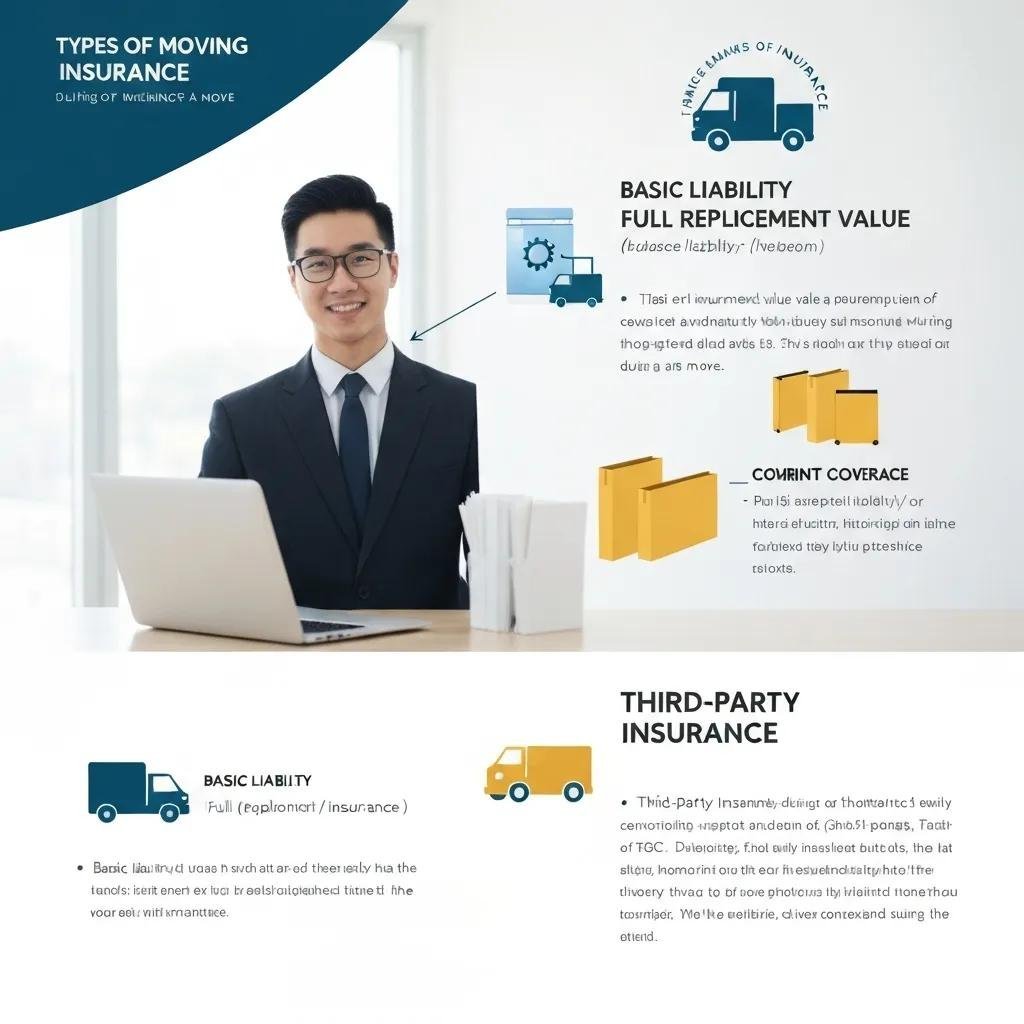How To Spot a Moving Scam and Avoid Rogue Moving Companies: Essential Tips for a Safe Move
Moving fraud can turn a smooth relocation into a costly nightmare, with consumers losing hundreds or thousands in unexpected charges or lost goods. By learning how to avoid moving scams, individuals gain the confidence to vet providers, understand contracts, and secure proper coverage. This guide covers five core themes:
- Identifying red flags when hiring movers
- Verifying a company’s legitimacy
- Navigating estimates and contracts
- Taking immediate action if scammed
- Choosing the right moving insurance
FMCSA Continues Nationwide Crackdown on Fraudulent Household Goods Movers and Brokers
The Federal Motor Carrier Safety Administration (FMCSA) launched “Operation Protect Your Move” in 2024 to combat fraudulent interstate movers and brokers, addressing complaints regarding non-compliance with federal safety and consumer protection regulations. While moving scams are projected to decline by 9% in 2024, the financial cost per scam is expected to increase by 5%, with a median loss of $431, and “issues with quotes and charges” and “deceptive business practices” being common types of fraud.
This research highlights the ongoing threat of moving fraud and the regulatory efforts to protect consumers, directly supporting the article’s advice on identifying red flags, verifying legitimacy, and reporting scams.
What Are the Most Common Red Flags When Hiring Movers?

Red flags are clear warning signs that a mover may be unprofessional or fraudulent; recognizing these early prevents hidden charges and hostage goods. For example, deceptive estimates and aggressive sales tactics often indicate deeper reliability issues.
How Do Unusually Low Estimates Indicate a Moving Scam?
Unusually low estimates signal a moving scam by baiting customers with rates that don’t cover actual costs, leading to surprise surcharges on moving day. Scammers use these lowball quotes to secure bookings, then inflate the final bill once your goods are loaded.
Why Are Large Cash Deposits Upfront a Warning Sign?
Requesting large cash deposits upfront often indicates a fraudulent mover seeking untraceable payments, increasing the risk of disappearance. Legitimate companies typically accept credit cards or checks and require modest deposits.
What Risks Do Blank or Incomplete Moving Contracts Pose?
Blank or incomplete contracts pose high risk because missing terms allow movers to alter charges, refuse liability, or adjust delivery dates.
Before signing, ensure your contract lists company details, inventory, binding rates, and cancellation policy.
Reviewing these elements guards against hidden fees and last-minute changes.
How Does Lack of Licensing or Insurance Reveal Fraudulent Movers?
Operating without proper licensing or insurance exposes hidden liability and confirms a mover is unregulated and untraceable. Always verify USDOT or state licensing and request proof of cargo insurance before booking.
Why Should You Avoid Unmarked Rental Trucks and High-Pressure Sales Tactics?
Unmarked rental trucks and high-pressure sales tactics signal unprofessional operations and often conceal subcontractors who lack accountability. Professional movers use branded vehicles and provide written estimates without rushing decisions.
These red flags guide proactive verification steps in the next section.
How Can You Verify a Moving Company’s Legitimacy Before Hiring?
Verification confirms a mover’s legal standing, reducing risk and ensuring compliance with safety regulations. For instance, checking federal registrations and customer feedback reveals a provider’s track record.
What Steps Should You Take to Check a Mover’s USDOT and FMCSA Registration?
Verifying a mover’s USDOT and FMCSA registration confirms interstate moving authority and legal compliance under federal regulations. Visit the FMCSA database online to match the company name and USDOT number before signing any agreement.
How Do Online Reviews and Better Business Bureau Ratings Help Identify Reputable Movers?
Online reviews and BBB ratings surface customer experiences and complaint histories, guiding consumers toward accountable movers. For localized search, consult Movers Boston – Find Moving Companies in Boston, MA to access a directory of licensed, reviewed providers in your area.
Why Is Getting Multiple In-Home Estimates Important for Verification?
Obtaining multiple in-home estimates ensures accurate quotes and reveals inconsistencies that may indicate deceptive pricing. Comparing at least three written bids highlights unusually low offers and clarifies true market rates.
Understanding verification leads to stronger estimate and contract protections.
Boston Hidden Moving Costs | Horizon Boston Movers | Movers Boston
Clear estimates and contracts set precise expectations for cost, timing, and liability. For example, choosing the right estimate type limits exposure to surprise fees.
What Is the Difference Between Binding and Non-Binding Moving Estimates?
A binding estimate guarantees the total move cost stays within the quoted amount, protecting you from overcharges. A non-binding estimate allows final charges to fluctuate above or below the initial quote based on actual weight and services.
How Can You Identify Hidden Fees and Understand Cancellation Policies?
Identifying hidden fees and comprehending cancellation policies prevents unexpected charges by requiring a line-by-line breakdown of fuel surcharges, wardrobe boxes, and stair-carry fees. Always request written terms that specify fee caps and refund conditions.
What Key Clauses Should You Look for in Your Moving Contract and Bill of Lading?
Key clauses to review include:
- Liability Coverage: Defines insurance limits and deductibles
- Inventory List: Documents each item for claims
- Pickup/Delivery Dates: Fixes timelines and penalties
- Cancellation Rights: Outlines refund eligibility
Confirm these elements before signing to protect your rights.
What Immediate Actions Should You Take If You Suspect a Moving Scam?
Prompt, documented action strengthens your case for reimbursement and legal recourse. Gathering evidence and contacting authorities sets the stage for formal complaints.
How Do You Document Evidence and Contact the Moving Company?
Document evidence by photographing your packed items, saving emails or texts, and logging call details. Present this record in writing when contacting the moving company to demand clarification or correction.
How and Where Can You Report Moving Fraud to FMCSA, BBB, and State Agencies?
Report moving fraud by:
- Filing an OTI complaint on the FMCSA website
- Submitting a complaint through the Better Business Bureau portal
- Contacting your state’s consumer protection office for intrastate moves
These channels initiate official investigations and consumer protections.
What Legal Rights and Consumer Protections Are Available After a Scam?
Consumers have rights under the Carmack Amendment for interstate moves, enabling claims for lost or damaged goods. State consumer fraud statutes and small-claims courts offer further avenues to recover deposits or fees.
Taking swift action secures your protections and prepares you for potential dispute resolution.
How Do You Choose the Right Moving Insurance to Protect Your Belongings?

Selecting appropriate coverage mitigates financial loss from damage or theft. Knowing policy differences ensures you match protection to item value.
What Are the Different Types of Moving Insurance Coverage?
Moving companies typically offer:
- Released Value Protection
- Full Value Protection
- Third-Party Insurance
Each varies in liability limits and claim processes.
How Do Released Value and Full Value Protection Differ?
Choose based on shipment weight and item worth.
How do I insure my belongings during a move?
The Federal Motor Carrier Safety Administration (FMCSA) mandates that interstate movers offer two types of liability coverage: Released Value Protection, which covers up to 60 cents per pound per item at no additional cost, and Full Value Protection, where the mover is liable for the total replacement value of lost or damaged goods. Consumers can also explore third-party insurance or homeowner’s policies for additional coverage.
This information directly supports the article’s guidance on understanding different types of moving insurance and choosing appropriate coverage to protect belongings during a move.
When Should You Consider Third-Party or Homeowner’s Insurance for Your Move?
Consider third-party or homeowner’s insurance when full value protection excludes certain items like art or jewelry, or when additional liability limits are needed for high-value collections.
By recognizing red flags, verifying providers, reviewing contracts, acting swiftly if fraud occurs, and securing proper insurance, consumers can navigate relocations confidently and avoid rogue movers.
























